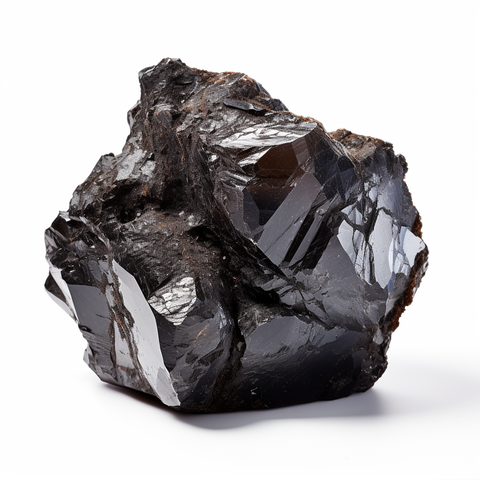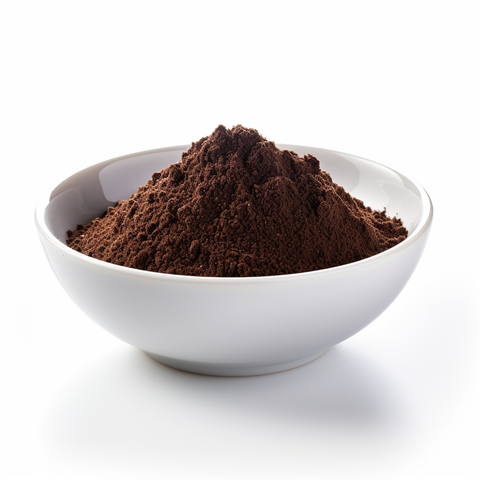
Shilajit, a powerful natural substance, has been used for centuries in traditional medicine systems such as Ayurveda and Siddha. Derived from the rocks of the Himalayan mountains, shilajit is known for its numerous health benefits and therapeutic properties. In recent years, it has gained popularity as a natural supplement for promoting overall well-being.
Shilajit offers a wide range of benefits that can positively impact various aspects of our health. From boosting energy levels to supporting cognitive function, this potent substance has been praised for its versatility. Additionally, shilajit is believed to have antioxidant and anti-inflammatory properties, making it a valuable addition to any wellness routine.
Shilajit, also known as mineral pitch or mumijo, is a sticky resinous substance that oozes out of cracks in the rocks of mountainous regions. It is primarily found in the Himalayas, Altai Mountains, Caucasus Mountains, and other high-altitude areas.
The formation of shilajit is an interesting process that takes place over thousands of years. It begins with the decomposition of plant matter and microbial activity in the mountains. As this organic matter breaks down, it combines with minerals and other substances present in the rocks to form a thick resin-like substance.
Over time, this mixture gets transformed into a dense mass due to pressure from geological movements and changes in temperature. When the conditions are just right, shilajit seeps out of these rocks during warm summer months.
Himalayan shilajit specifically refers to shilajit sourced from the Himalayan mountain range. This region is particularly rich in minerals and organic matter, resulting in high-quality shilajit with potent therapeutic properties.
In Ayurvedic medicine, shilajit is considered a rejuvenating substance that promotes overall health and well-being. It is believed to contain numerous minerals, trace elements, fulvic acid, and other bioactive compounds that provide various health benefits when consumed or applied topically.
As more people become interested in natural remedies and traditional healing practices, understanding the origin of shilajit helps us appreciate its significance as a valuable natural resource with immense potential for improving human health.
When it comes to shilajit, there are different forms available in the market. Each form has its own unique characteristics and benefits. Understanding these forms can help you choose the right one for your needs.

Shilajit resin is one of the most common forms of shilajit. It is a sticky substance that is usually found in a solid or semi-solid state. Shilajit resin is often dissolved in warm water or milk before consumption. It is known for its high concentration of minerals and bioactive compounds.

Shilajit powder is another popular form of shilajit. It is made by drying and grinding the resin into a fine powder. Shilajit powder can be easily mixed into beverages or added to food for consumption. This form provides convenience and versatility in terms of dosage.

Shilajit capsules are also available for those who prefer a more convenient option. These capsules contain powdered or liquid shilajit enclosed in gelatin or vegetarian capsules. They offer a precise dosage and are easy to swallow.
When choosing the right form of shilajit, consider factors such as convenience, personal preference, and desired dosage accuracy. If you prefer traditional methods, shilajit resin may be suitable for you. If you value convenience and ease of use, shilajit powder or capsules may be preferable.
Additionally, it's crucial to purchase high-quality shilajit from reputable sources to ensure its purity and potency. Following the recommended dosage guidelines and using authentic products will help you make the most out of this natural supplement while minimising any potential risks or side effects.
When it comes to taking shilajit, it is important to follow the recommended dosage guidelines to ensure its safe and effective use.
The recommended dosage of shilajit can vary depending on factors such as age, weight, and overall health. However, a general guideline for adults is to take around 300-500 milligrams of shilajit per day. It is usually advisable to start with a lower dosage (around 100mg ) and gradually increase it if needed.
Determining the best time to take shilajit can greatly impact its effectiveness and the overall benefits you may experience. While there is no one-size-fits-all answer, understanding how shilajit works can help guide your decision on when to consume it.
When it comes to timing, many experts suggest taking shilajit in the morning on an empty stomach. This allows your body to absorb the nutrients and minerals present in shilajit more effectively. Consuming it before breakfast can also provide an energy boost for the day ahead.
However, some individuals may find that taking shilajit later in the day works better for them. It is important to listen to your body and observe how you feel after consuming shilajit at different times of the day. If you notice increased alertness or improved focus when taking it in the afternoon or evening, adjusting your intake accordingly may be beneficial.
Ultimately, finding the best time to take shilajit depends on your individual preferences and lifestyle. Experimenting with different timings and paying attention to how your body responds can help determine when you experience maximum effectiveness from this natural supplement.
Consistency is key when it comes to taking shilajit and reaping its potential benefits. Many people wonder how long they should take shilajit to experience its effects and whether it is safe for long-term use.
The duration for taking shilajit can vary depending on individual needs and goals. Some individuals may start noticing the effects of shilajit within a few weeks, while others may require a longer period of regular consumption.
It is important to note that shilajit is a natural substance and its effects may not be immediate or drastic. It works gradually by nourishing the body with essential minerals and nutrients, supporting overall health and well-being.
When it comes to taking shilajit safely, there are a few important guidelines to keep in mind, like any other supplement, it's important to use it responsibly and take precautions.
Firstly, it's crucial to consult with a healthcare professional before starting any new supplement regimen, including shilajit. They can provide personalised advice based on your specific health needs and medical history.
When purchasing shilajit, ensure that you are buying from a reputable source. Look for products that have been tested for purity and quality by third-party organisations. This helps to minimise the risk of consuming impure or contaminated substances.
To minimise the potential side effects of taking shilajit, start with a low dosage and gradually increase it if needed. This allows your body to adjust and reduces the chances of experiencing any adverse reactions. It's also recommended to follow the dosage instructions provided by the manufacturer or as advised by your healthcare professional.
Additionally, be aware of any possible interactions between shilajit and other medications or supplements you may be taking. Certain combinations can have unwanted effects or reduce the effectiveness of either substance. Always inform your healthcare provider about all the medications and supplements you are currently using.
Lastly, pay attention to how your body reacts to shilajit. If you experience any unusual symptoms or side effects such as digestive issues, allergic reactions, or changes in mood or energy levels, discontinue use and seek medical advice.
Remember that everyone's body is unique, so what works well for one person may not work the same way for another.